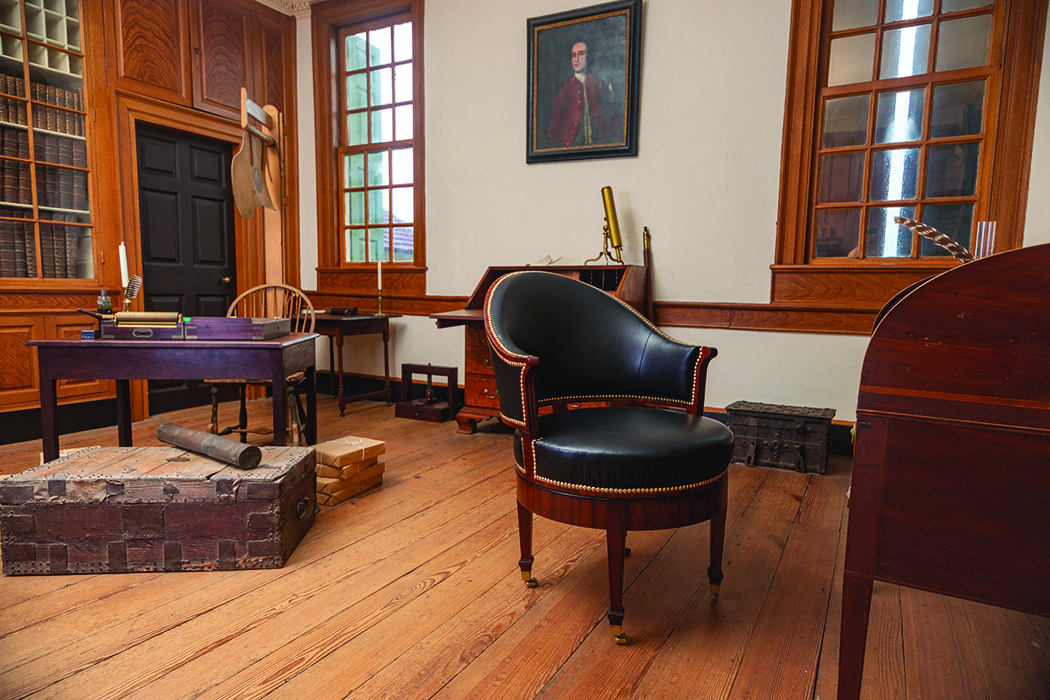NEWS

Introducing Washington’s New “Uncommon Chair”
On April 17, 1790, George Washington recorded in his account book a payment of £7 to New York cabinetmaker Thomas Burling, for what the president called an “Uncommon Chair.” Based on a sophisticated French model, this new chair was among the most unusual and fashionable to be found in the fledgling United States. A barrel-back armchair (referred to as a bergère en gondole), the piece featured a seat that swiveled on four hidden rollers made of horn, allowing the sitter to turn from one workstation to another without getting up. In essence, it was the first office chair in the nation.
The seat of Washington’s original chair is unusually deep, suggesting that the cabinetmaker custom-fitted the chair to the president’s tall frame. Washington used the chair at his Thomas Burling desk, also custom-made, for the remaining seven years of his presidency, almost certainly composing many of his official letters from it. He brought the chair home with him from Philadelphia to Mount Vernon, and he thought so highly of it that he specifically bequeathed it in his will to his lifelong friend Dr. James Craik. The piece ended up in the possession of President Andrew Jackson at The Hermitage in Nashville, Tennessee.
This Uncommon Chair is remarkably preserved, retaining its original under-upholstery and some of its original leather. To provide for the long-term preservation of these fragile components, the original chair will be placed on exhibit in the museum, while a sturdier, and painstakingly exact, reproduction now stands in for it in the Mansion study.
The curatorial team welcomed the opportunity to explore the chair’s original mechanisms as part of the research to create the new Uncommon Chair. Especially interesting were the ingenious horn rollers that allow the chair to swivel.
The reproduction process involved several specialist craftsmen. Cabinetmaker Harrison Higgins of Richmond, Virginia, created a template of the original chair and constructed the frame and rolling mechanism. Barry Barlow of Newark, New Jersey, carefully shaped the upholstery profile and covered the chair in black leather. And Thomas Snyder of Williamsburg Art Conservation applied the finish.
The Uncommon Chair project was made possible by the support of Geraldine and the late Robert Dellenback.